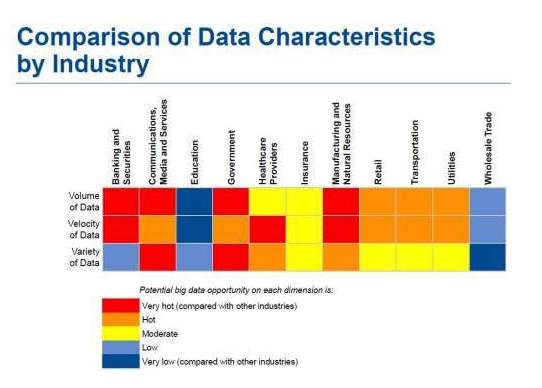

There’s a whole lot more to having a marketing automation strategy than simply making things faster and more efficient. More importantly, a marketing automation strategy gives you the ability to connect with your audience at a level we’ve previously not been able to tap into.
While to some it may feel strange that the ads they’re seeing and the articles they’re reading seem oddly perfect for their preferences and interests, it’s because of data that this is even possible. Using data is exactly the right approach when considering how to optimize marketing automation.
As you’re looking to stay competitive and keep up with the marketing demands of your industry, implementing a way to use data within your automation strategy only makes sense. Analyzing the data gives you a clear way of understanding what parts of your funnel may need propping up. Here are five ways to do just that.

Perhaps the most important job of big data is helping you understand your target audience. You’ll be able to dig into things like their average age, ethnic background, income level, and geographical locations, all of which inform how each individual shopper is likely to purchase. Having this knowledge allows you to cater more specifically to those markets.
Understanding our audience allows you to analyze things like what factors influence sales, how your social media is working, the ease of navigating and making purchases off of your website, and if your stores are in the right locations. This impacts how and when you follow up with customers, and when to send deals, coupons, and promotions.
Analyzing your email open rate is an excellent way to understand whether or not your marketing strategies are producing results. It’s important to understand whether or not your message is resonating with customers. But open rates aren’t the only way to understand your audience. Your marketing database should have tons of data points on your email list that can help you create segmented mailing lists based on interests.
So, for an outdoor sports outfitting company’s e-commerce site, you might segment purchasers based on the products they buy: hiking boots, kayaks, and bikes all signal different interests. Send the hikers newsletters with great local trails or camping recipes and include a couple of backpacks in your email. Send kayakers information about rolling classes and water safety, and send some deals for dry bags and boxes. Cyclists might be interested in great local routes with safety and repair kits as possible products.
Using data helps you to understand which messages have an impact on your audience. From there, you can begin to tailor your advertisements around what they’d prefer to see.
As you look at the types of messages that reach your audience, consider what you learn from those messages as you determine what type of content to include in your marketing funnel. What kinds of articles and blog posts perform well, and how can you include more of the same in your emails and newsletters?
A common question among marketers is asking where to start testing in automated workflows. Using data today is making testing very different from what we’ve seen in the past. Rather than testing a single factor, such as the time of day most of your audience opens your emails, you can include significantly more data to get even more accurate results.
Instead of looking at your audience as a collective whole, you can break them down into categories based upon things like gender and age, and determine which marketing strategy works best for each, and cater to those factors. For example, perhaps there are landing pages or headlines that resonate with an older demographic but doesn’t affect a younger one. Use your testing data to know which to use on what audience and when.
At the end of the day, you’re in business to make a profit, but the only way to know if your pricing is competitive is to have a solid pricing strategy. You can use data to determine how many leads slip through your fingers at the bottom of the marketing funnel because of the price.
If you’ve already built out a sales funnel within your customer relationship management (CRM) tool, you can use that to analyze your pricing. Look at your data to analyze how variations in pricing impacts your sales and use that to decide how to set your pricing at a point that is reasonable, while not hurting your profit margin.
The use of online ads for marketers is effective, but the key to success is that those ads need to be useful to your audience. Data allows you to target people based on articles they’ve read or websites they’ve visited. You’ll be able to use the information you’ve gathered to target ads that are relevant.
Keep in mind that when it comes to the real beauty of marketing automation, you want your ads, like your other content, to be useful. Most of your audience will not appreciate being “sold” to, especially if it’s a product or service that doesn’t relate to them in any way.
As you create your marketing automation strategy, consider the impact that data can make. It’s important to understand and test your audience, send the right message, correctly determine pricing, and know how your advertising efforts are being received.



Subscribe to us and you will know about our latest updates and events as just they will be presented





